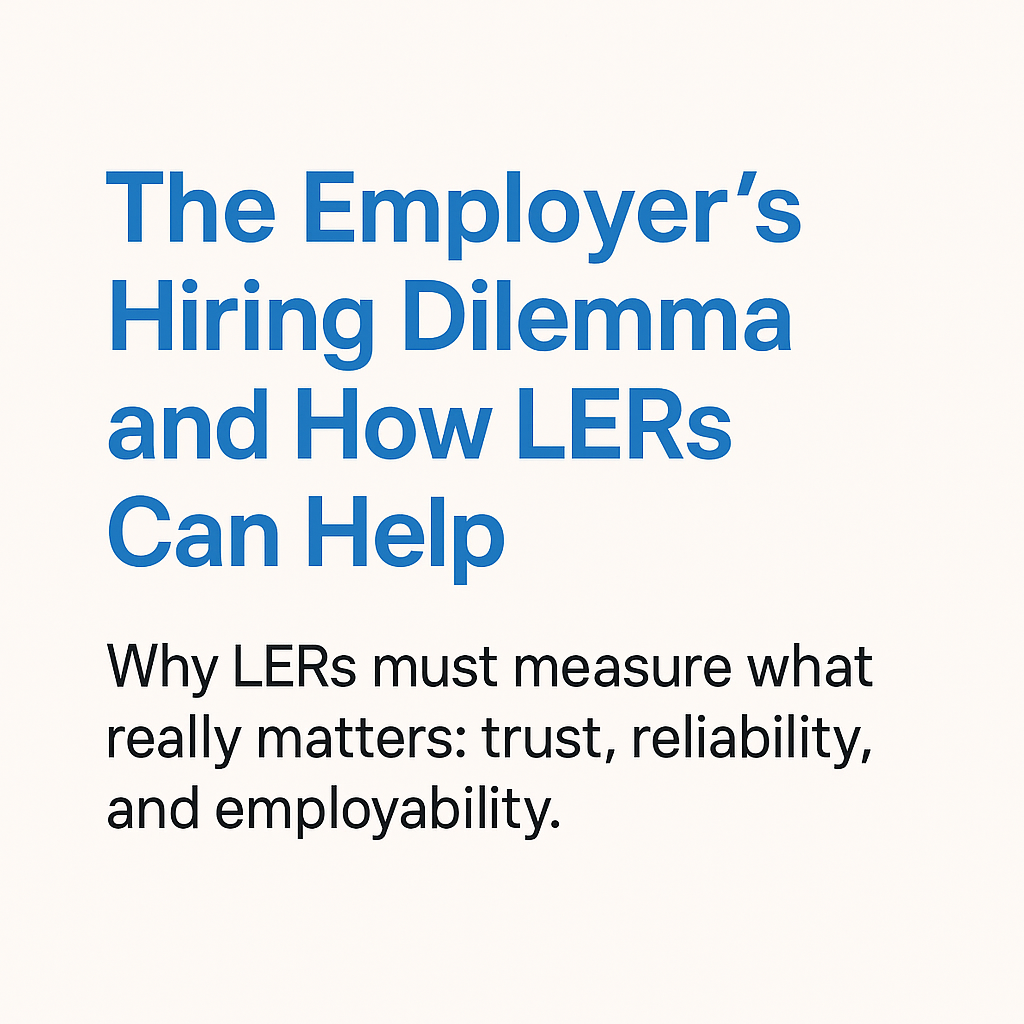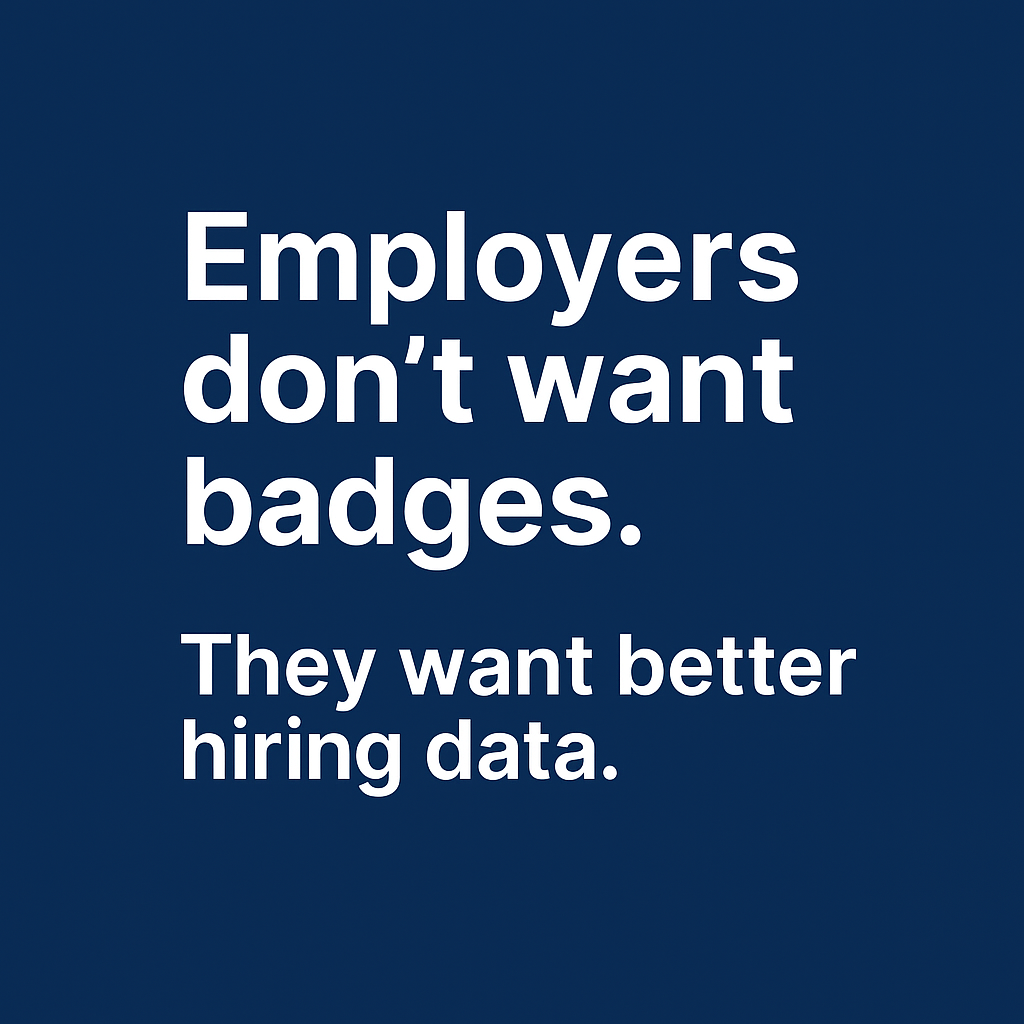Why LERs must measure what really matters: trust, reliability, and employability.

The federal government just opened one of the most strategically important funding opportunities of the decade for institutions preparing learners for the future of work. Through the new Fund for the Improvement of Postsecondary Education – Special Projects (FIPSE-SP) competition, colleges, universities, and other eligible organizations can secure millions of dollars to design or expand short-term programs that are tightly aligned with employer demand and powered by modern technologies.
What makes this opportunity different is the stated competitive preference that programs don’t stop at training—they must connect learners directly to employers through a Talent Marketplace built on Learning and Employment Record (LER) data. Priorities 6 and 7 of this funding round call for new or expanded short-term programs (8–15 weeks) that generate verifiable skills, feed those skills into interoperable digital credentials, and match learners to high-skill, high-wage job opportunities.
For institutions looking to launch or scale short-term workforce offerings, this is a rare moment: federal funds are available right now to build the employer-connected infrastructure that policymakers have been pushing toward for years. And thanks to SmartResume’s out-of-the-box LER Talent Marketplace—complete with verifiable learner profiles, integrations with every major credential issuer, and skill-first job posting tools for employers—institutions can meet these requirements without building a custom system from scratch.
👉 To explore how SmartResume can support your institution’s grant strategy, email: hello@smartresume.com
Priorities 6 and 7 are centered on helping institutions build or scale short-term workforce programs that lead directly to employment. Priority 6 supports the creation of new short-term programs; Priority 7 supports the expansion of existing ones. Both require programs to be employer-aligned, outcomes-driven, and connected to a functioning Talent Marketplace that uses LER data.
Competitive proposals must demonstrate:
Competitive proposals must show:
Institutions must show they can:
This is a training + credentialing + employment grant.
A wide range of organizations can apply, but the institutions positioned to benefit most are those building strong bridges between education and employment.
This grant helps community colleges:
Universities expanding non-degree offerings can use this funding to launch or grow:
They can apply directly or partner to:
This opportunity is as much about workforce modernization as it is about education.
The federal definition of a Talent Marketplace is extensive and intentional. It must include:
Programs that only train learners—without connecting them to jobs using this infrastructure—will not be competitive.
The Talent Marketplace requirement pushes institutions to:
It represents a major shift toward interoperable, skills-based systems.
SmartResume delivers every component required:
This makes SmartResume a direct enabler of institutional eligibility.
👉 To discuss how SmartResume fulfills the federal Talent Marketplace definition, email: hello@smartresume.com
SmartResume gives learners a verified profile that captures skills, credentials, and supporting experience.
SmartResume integrates with: Credly, Accredible, Canvas Credentials, and other major issuing platforms. All credentials automatically populate the learner’s record.
Employers can:
SmartResume uses AI to help:
SmartResume lets institutions:
SmartResume provides a turnkey pathway to meeting core federal requirements.
The FIPSE–Special Projects competition marks a turning point in federal workforce policy. Short-term training is no longer enough—institutions must deliver verifiable skills, portable credentials, and direct pathways to employment through a functioning Talent Marketplace.
SmartResume equips institutions with everything they need to meet these expectations: LER-ready learner profiles, integrations with all major credential platforms, skill-first employer tools, and a public marketplace that connects credentials to real job opportunities.
For community colleges, universities, workforce boards, and regional partnerships, this is a historic opportunity to secure federal funding and build workforce systems that actually work.
👉 To explore how SmartResume can support your proposal or partnership strategy, email: hello@smartresume.com

Why LERs must measure what really matters: trust, reliability, and employability.

How to talk to employers about the power of verifiable data, without saying LER

Today, iDatafy announces SkillSync, a new feature to SmartResume that allows skill validation organizations of all kinds to make skills portable in verifiable form.

This SmartReport consists of two infographics that show the way data flows through the Learning and Employment Record Ecosystem. It outlines the organizations and companies that are involved in the issuance, sharing, and consumption of specific verifiable credential data standards in the United States in 2024. The report also consists of a thorough explanation of the methodology used to create these infographics, ecosystem trends, definitions, and the thirty-eight generous contributors whose expertise was leveraged to assemble this information.